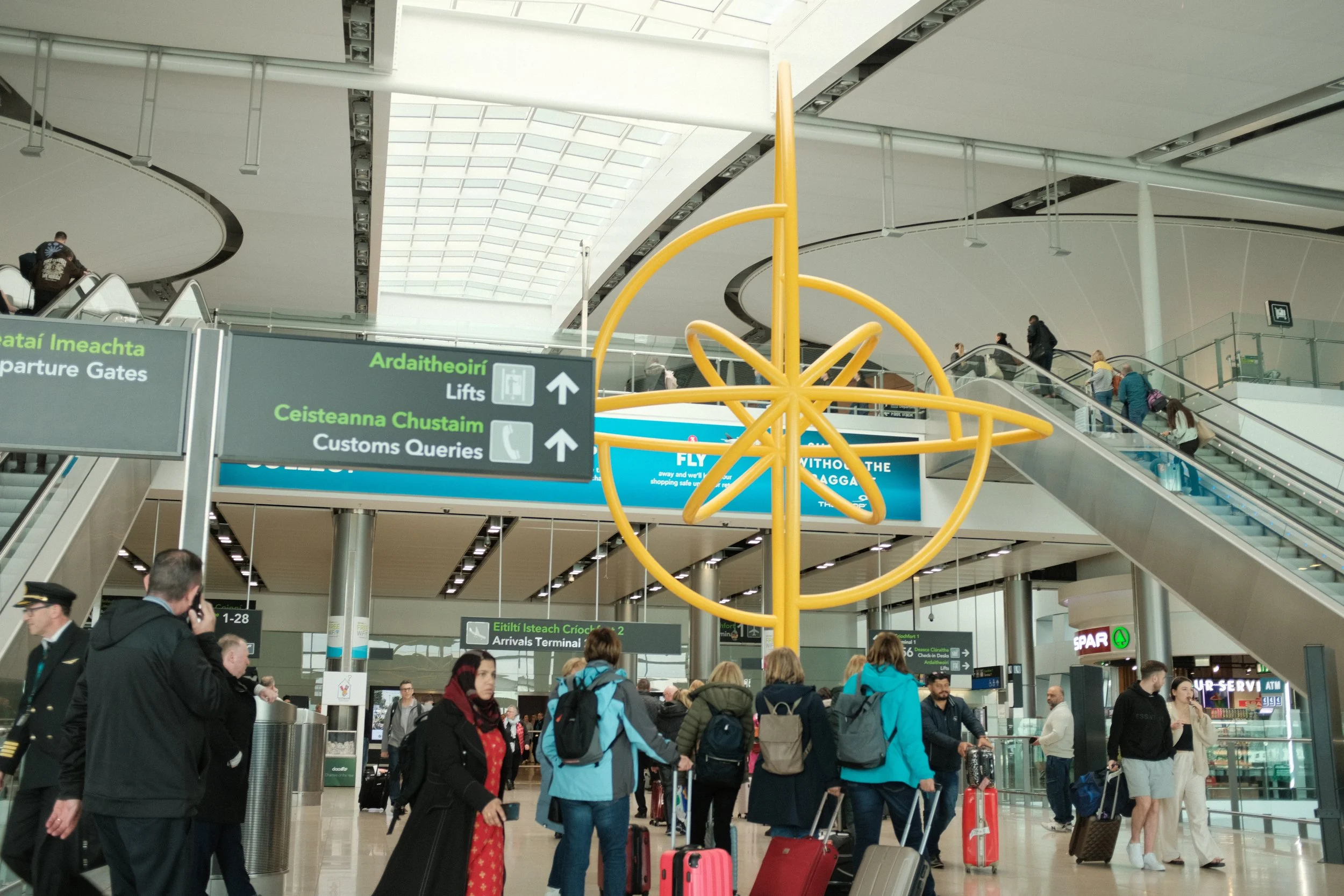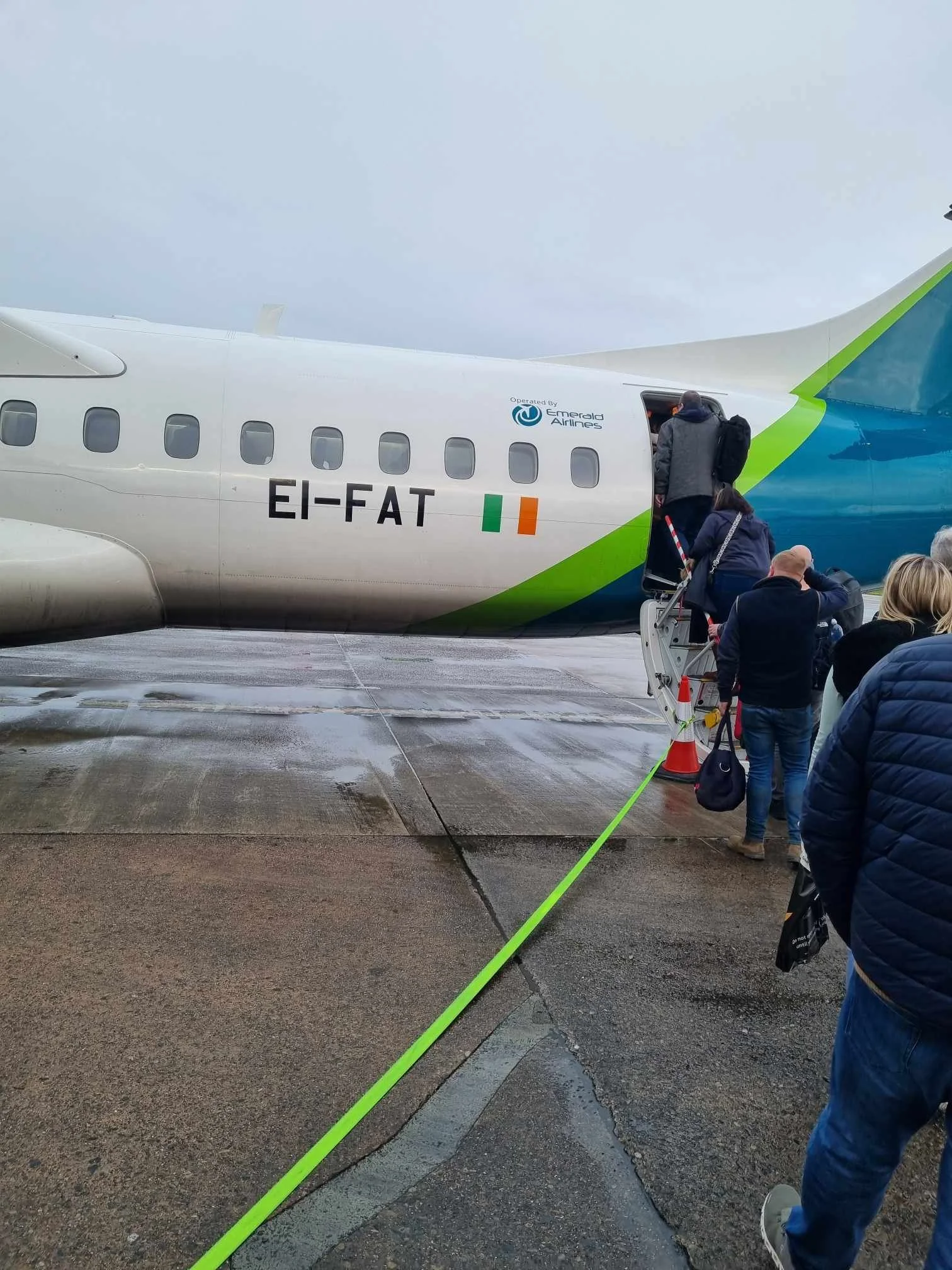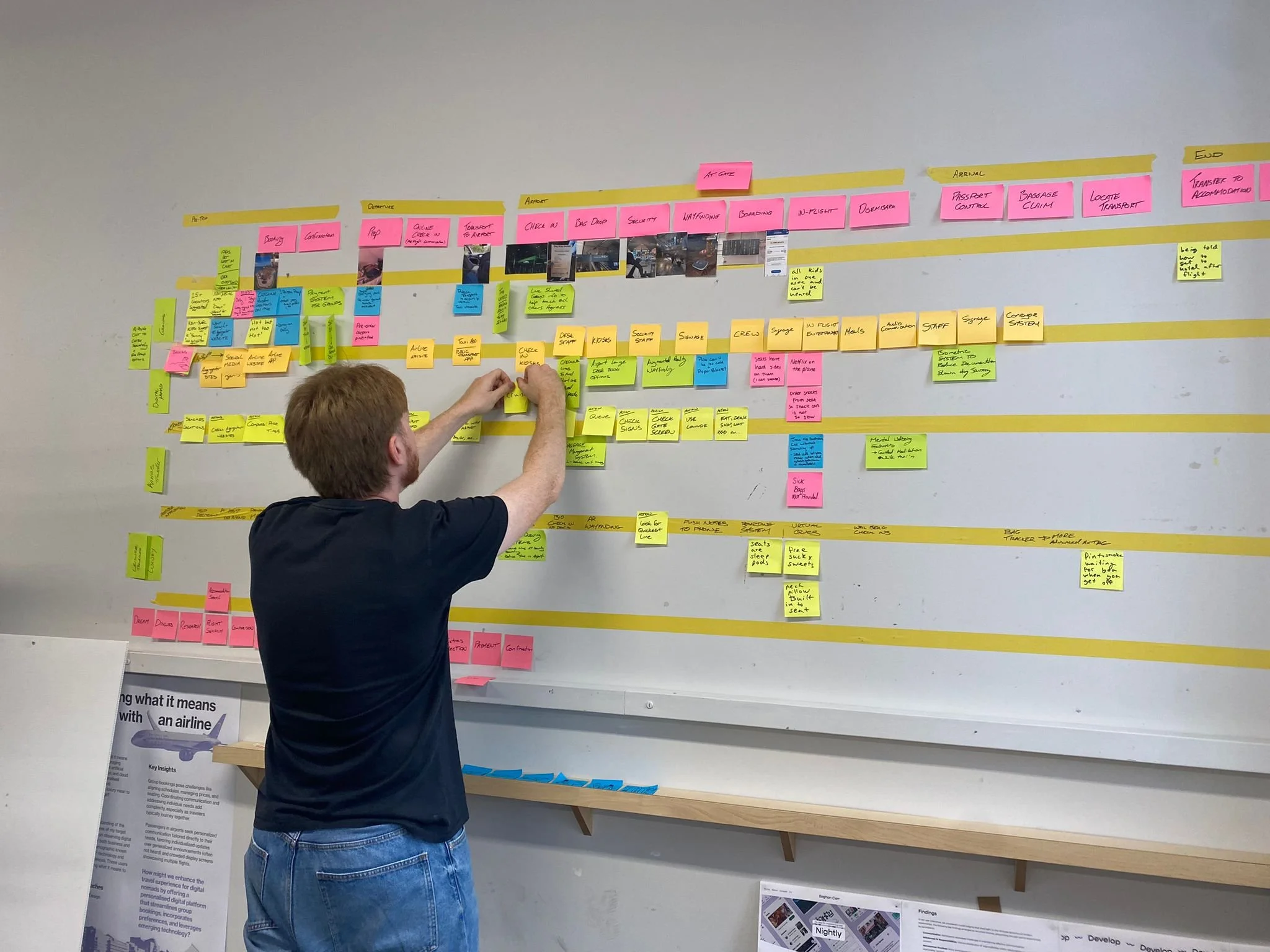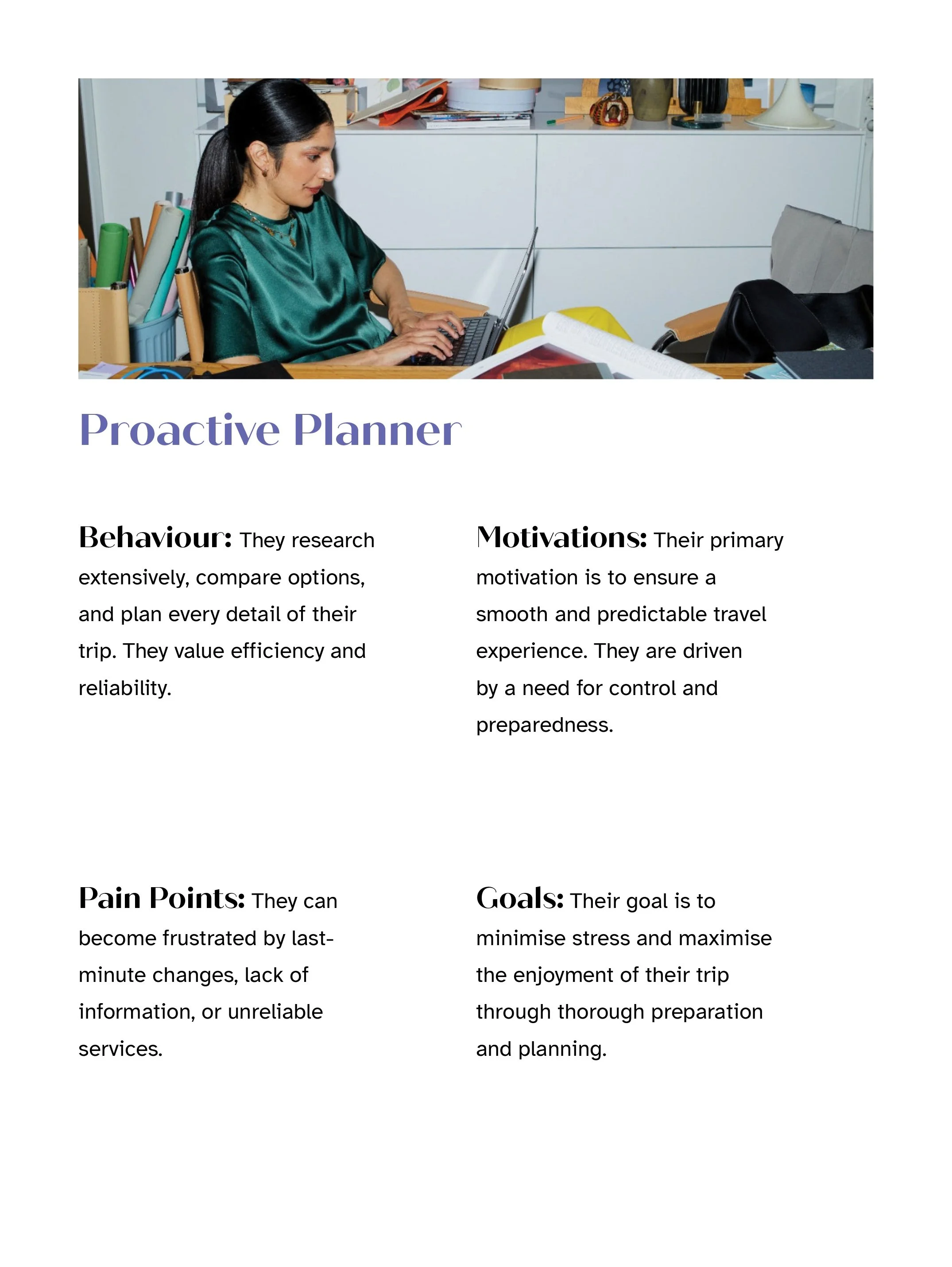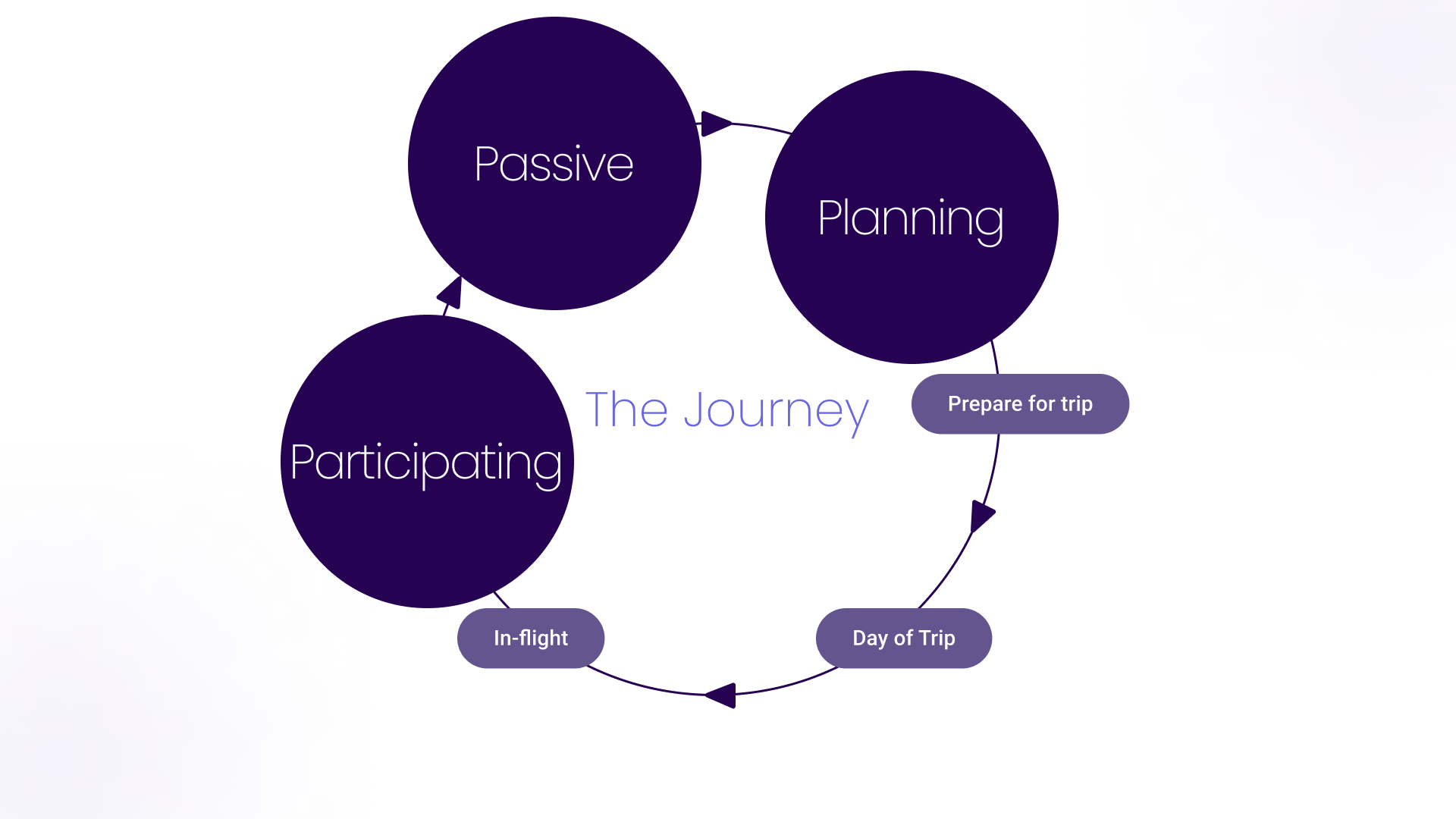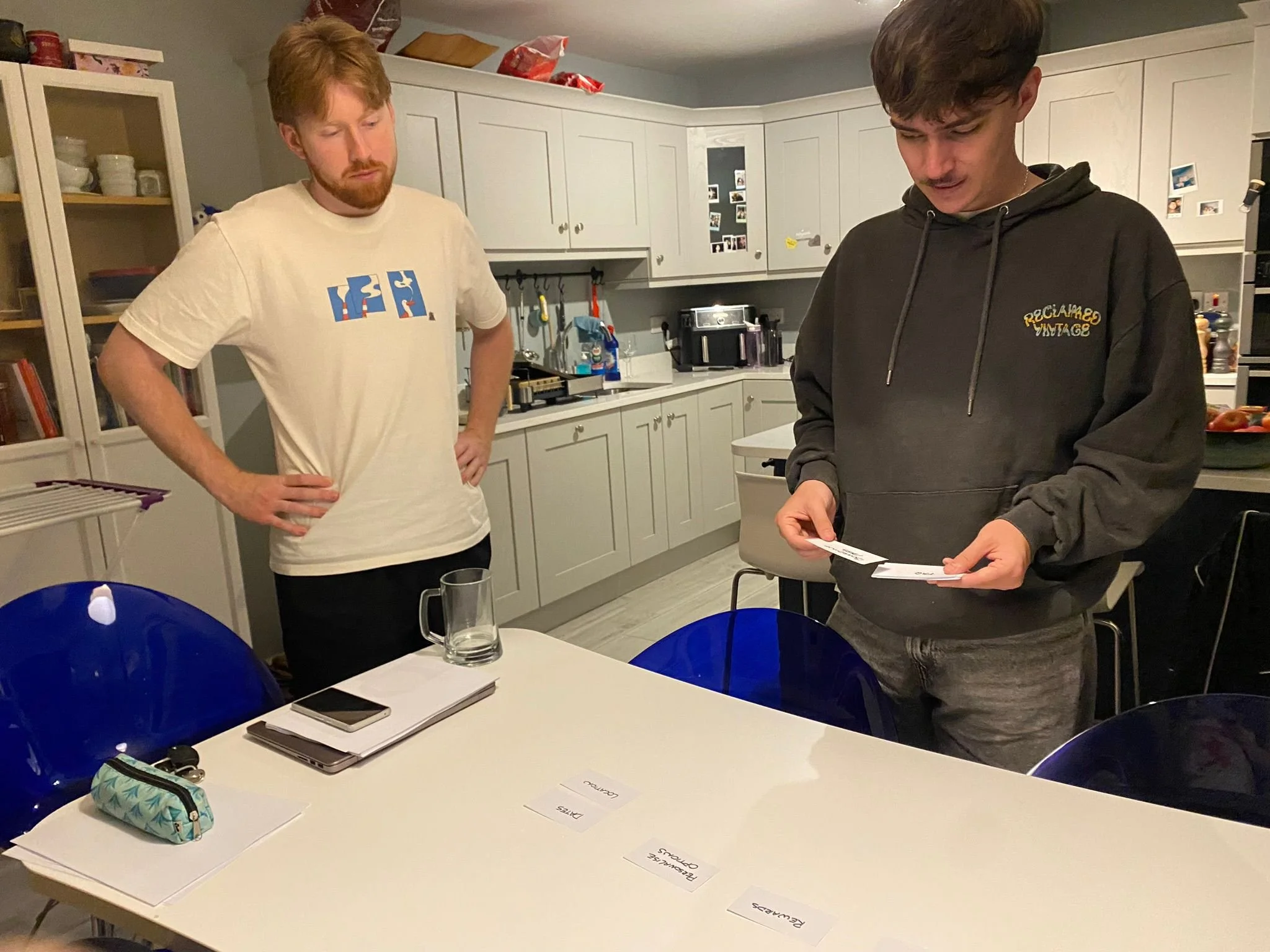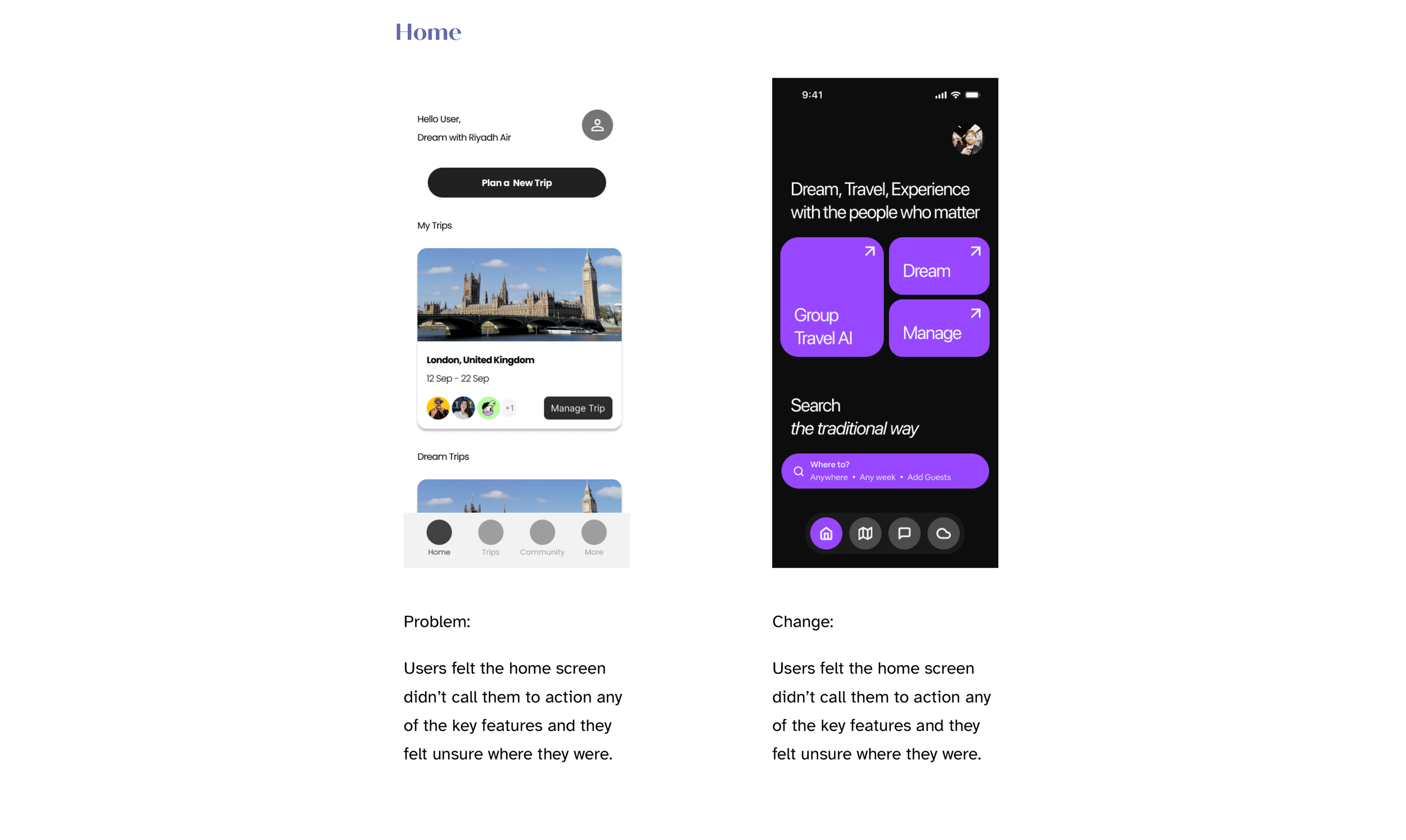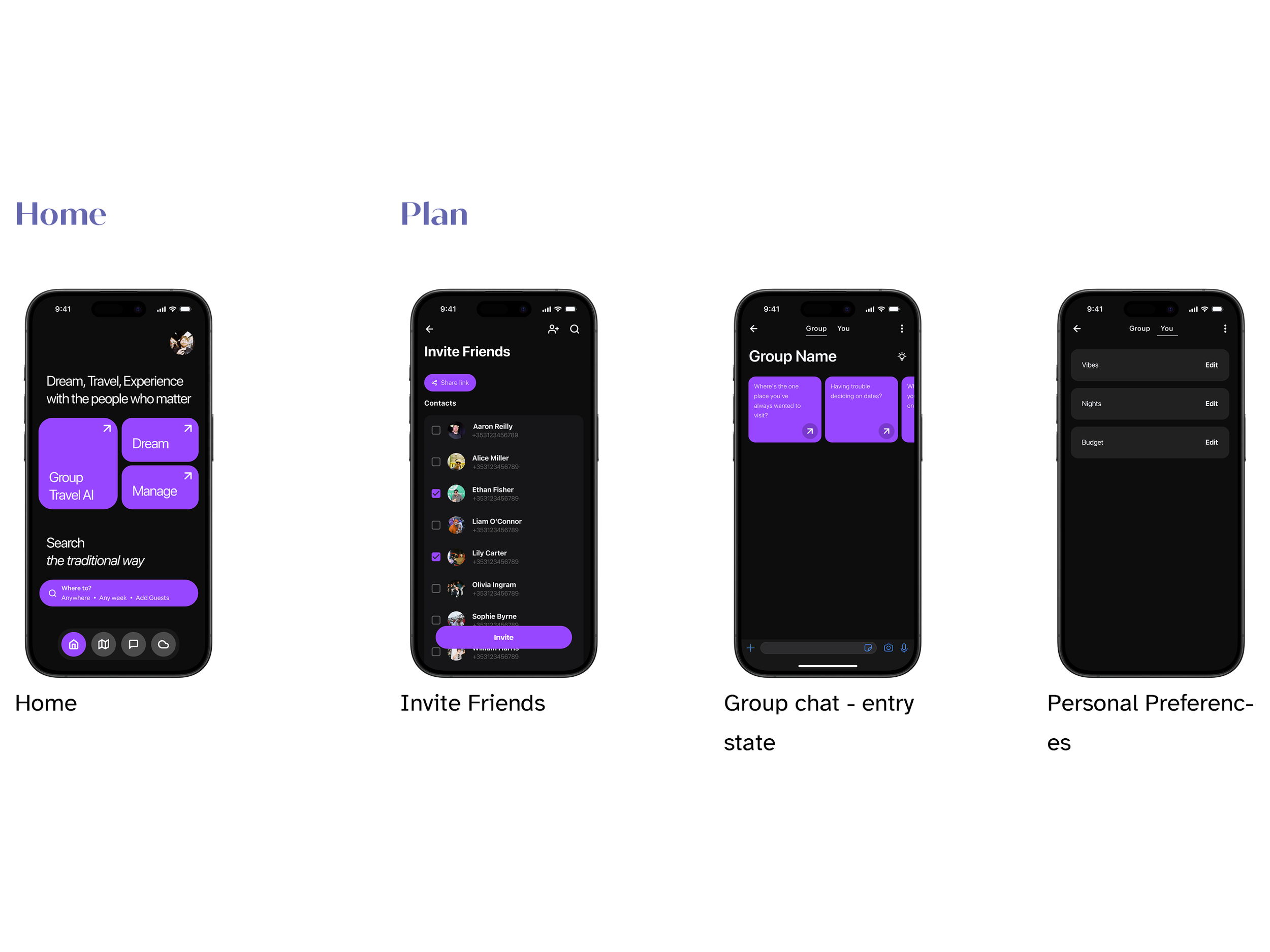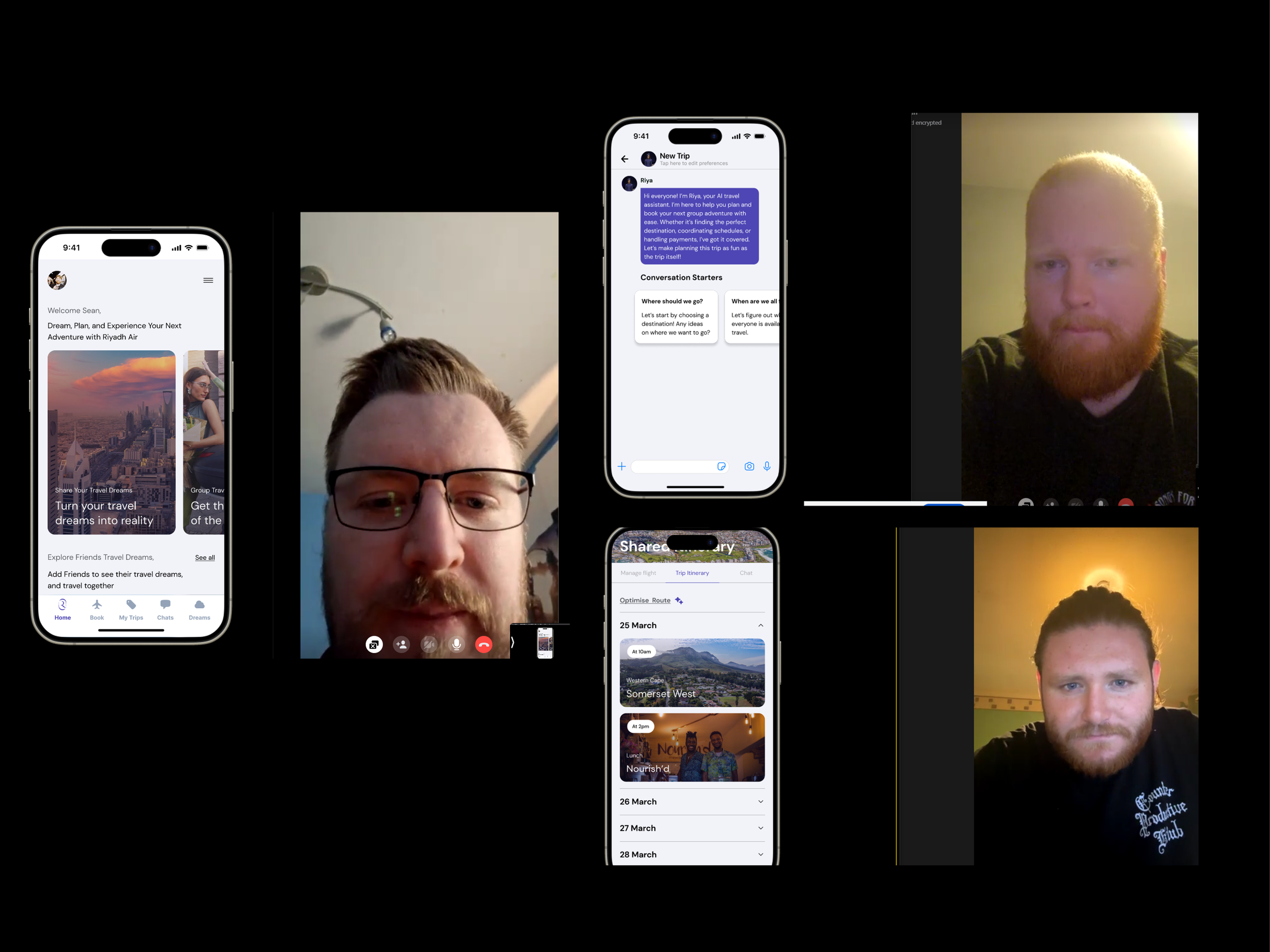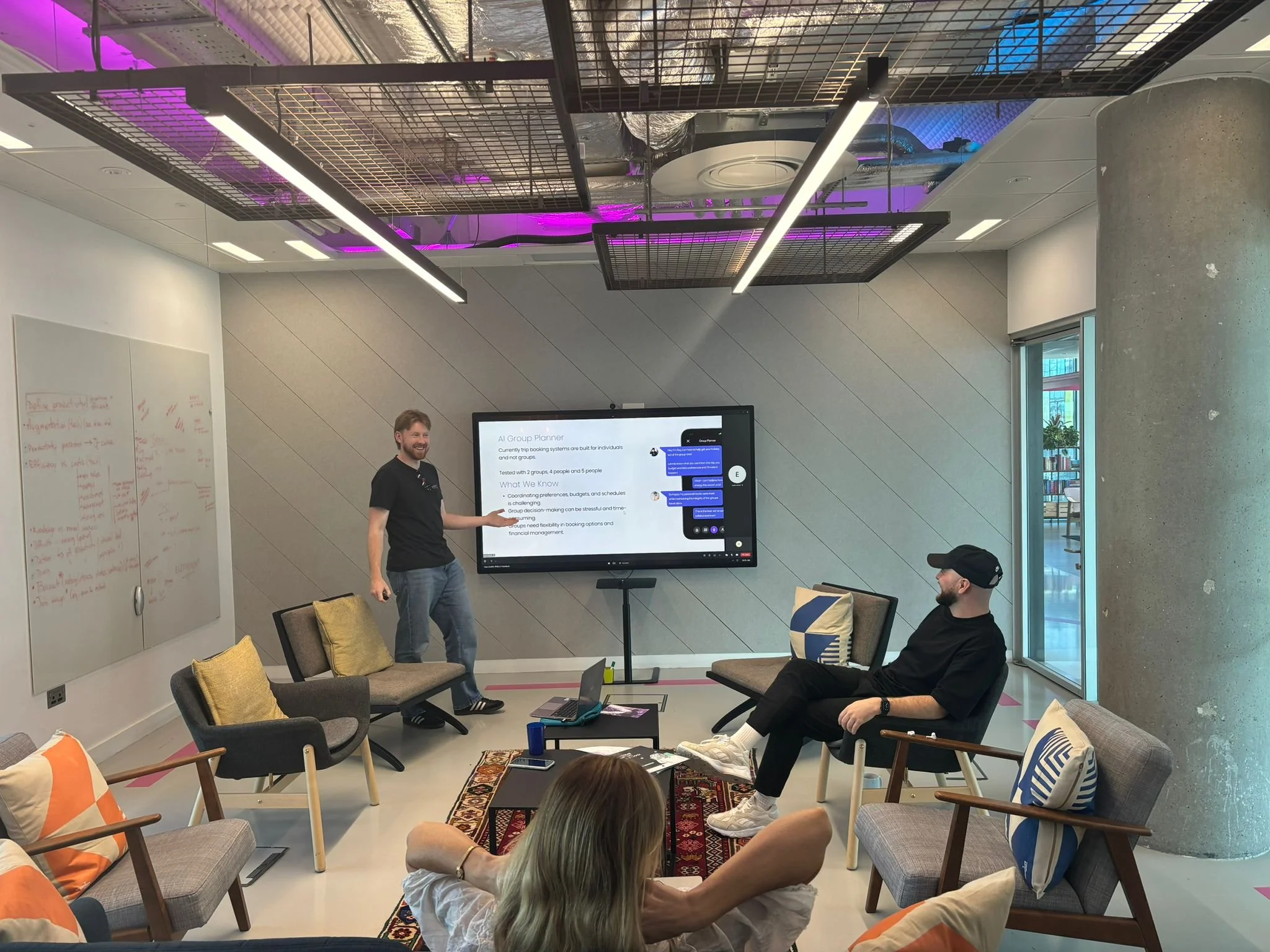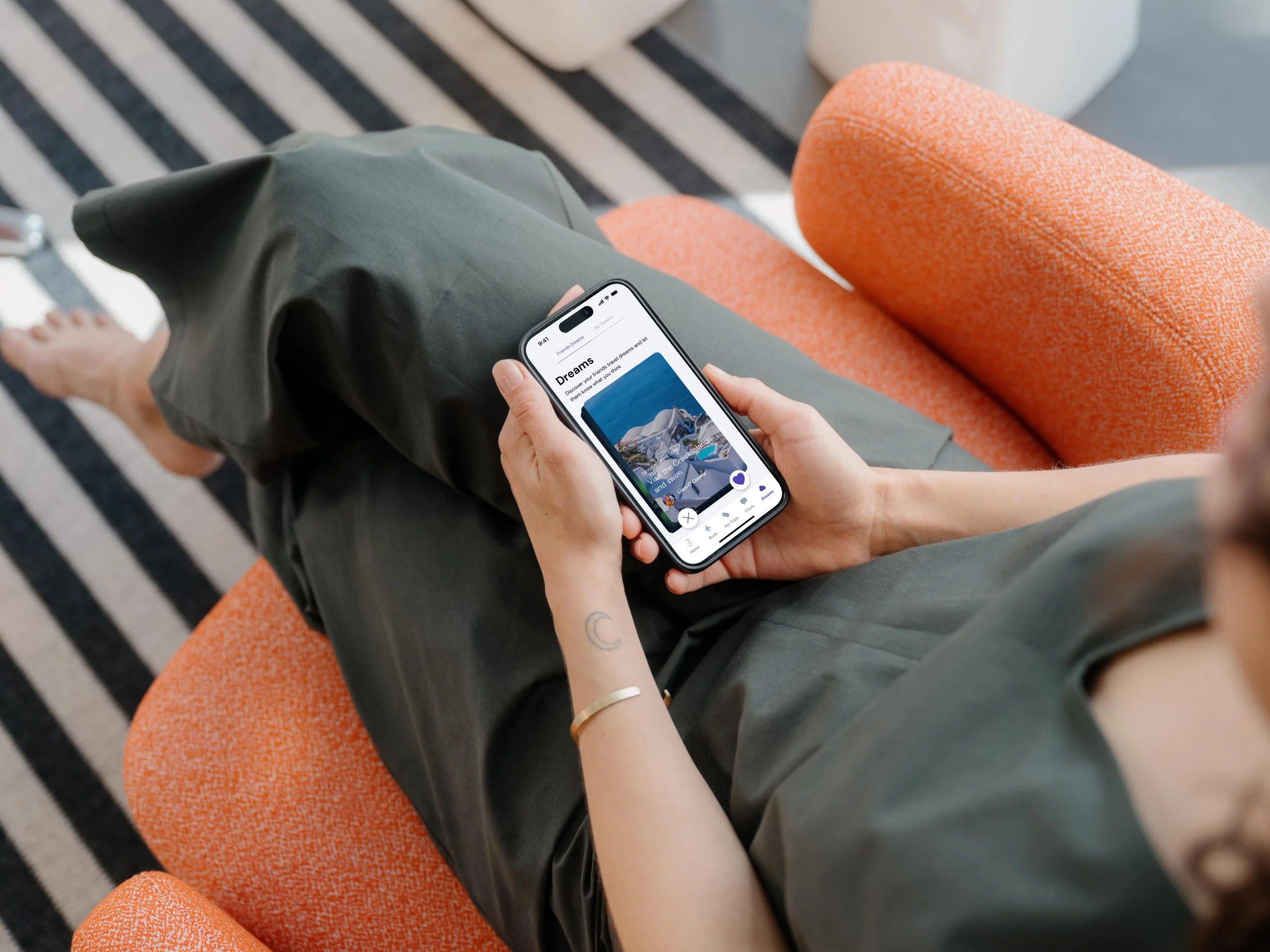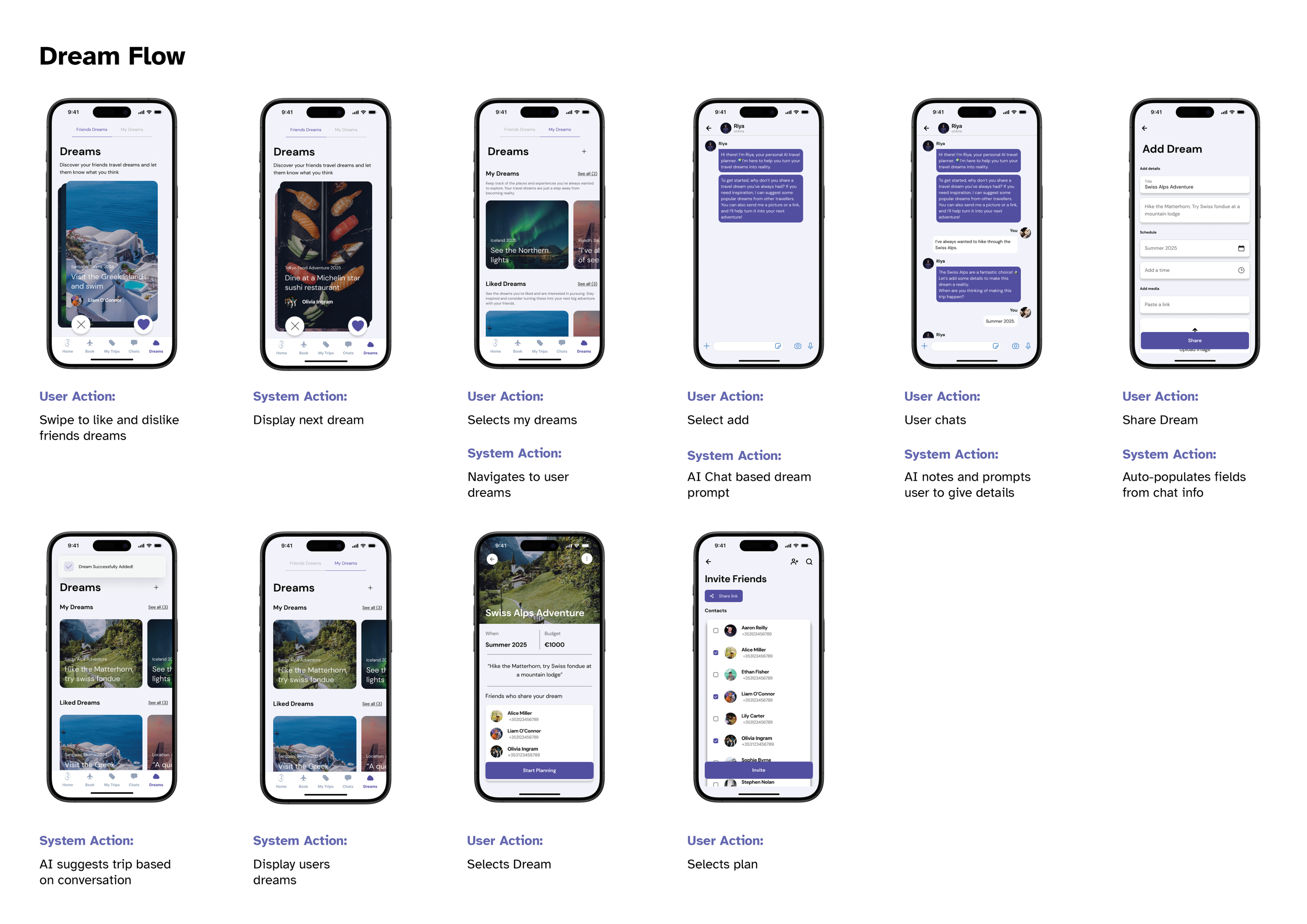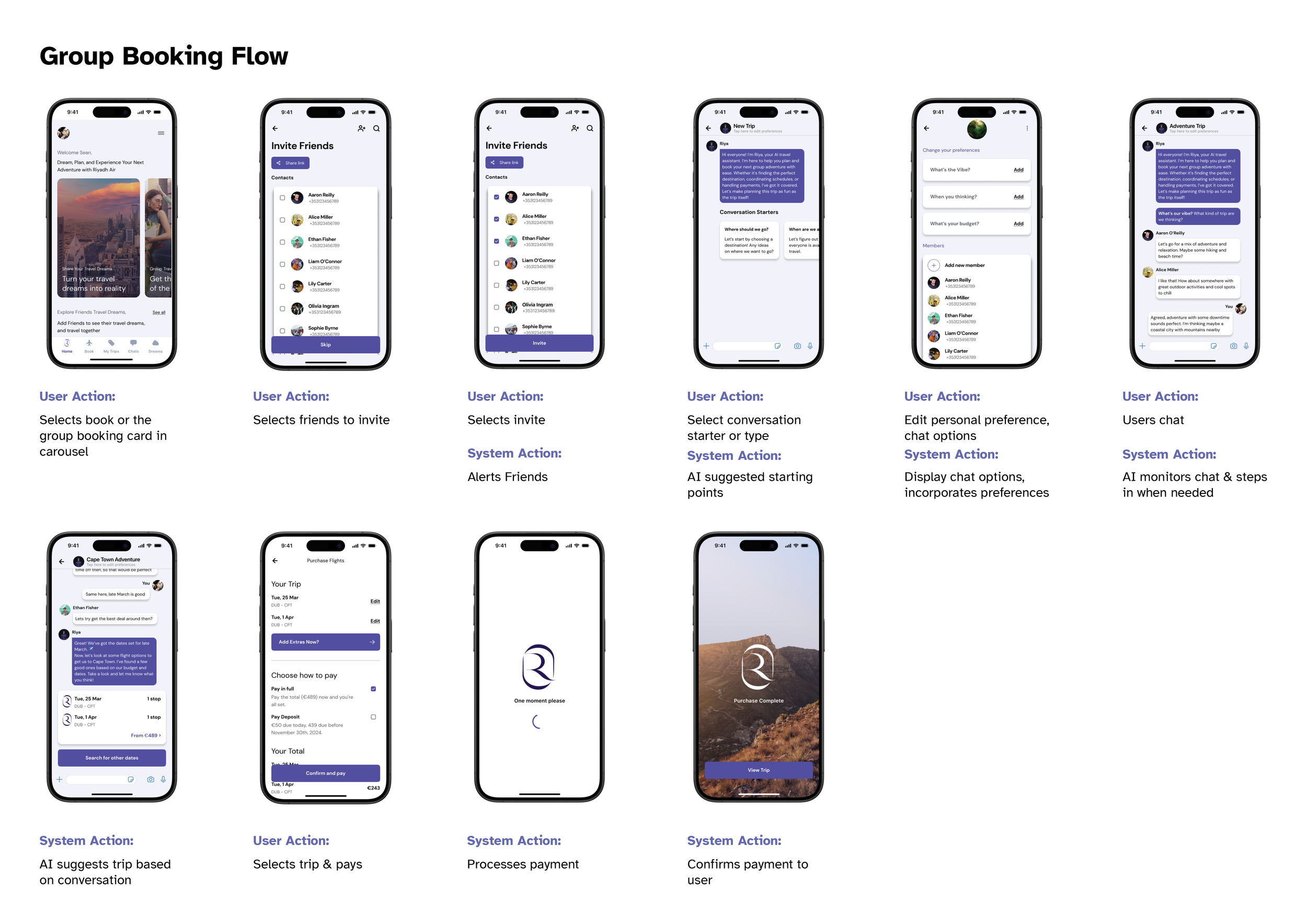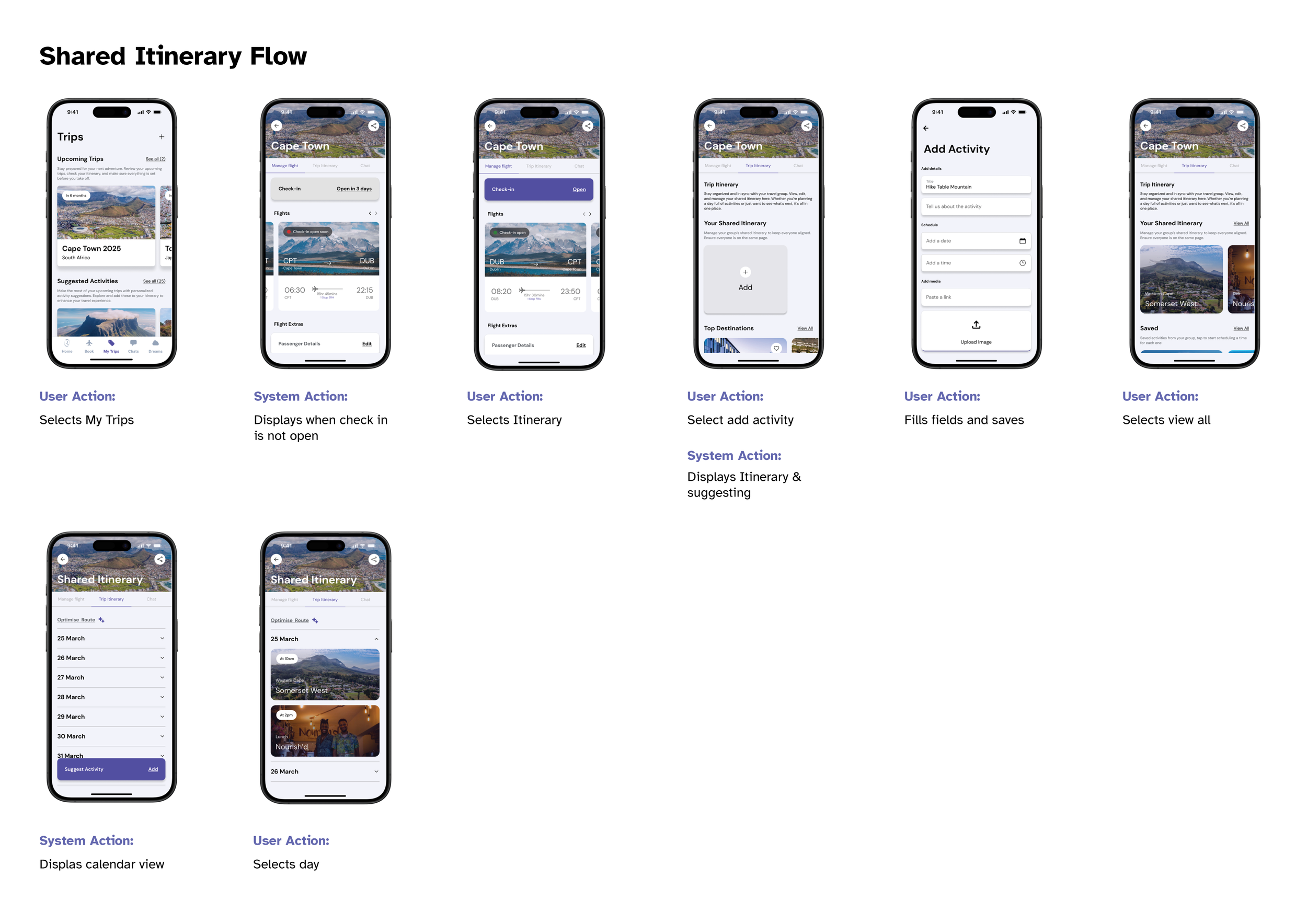Riyadh Air Guest Experience
Project Timeline 20/05/24 - 29/08/24
Project Overview
In partnership with Accenture, I embarked on a project to design a digitally native travel experience for Riyadh Air, a pioneering airline set to launch in 2025. The goal was to create a seamless, user-centred platform that would appeal to Gen Z travellers, redefining how they plan, book, and experience travel.
Role
As the Lead UX Designer on this project, I was responsible for conducting end-to-end user research, wireframing, prototyping, and usability testing. I'm particularly proud of the innovative design solutions that I developed to enhance the user experience
Design Process
I applied the Double Diamond design process model, which emphasizes two key phases: divergent thinking to explore possibilities and convergent thinking to refine solutions. The process is divided into four stages: Discover, Define, Develop, and Deliver. This framework allowed me to first empathize with users and explore their needs through research, then define the core problem areas. Following that, I developed multiple design solutions, iterated through prototyping, and finally delivered the most effective solutions based on user testing and feedback.
The Concept
The final concept offers a seamless, end-to-end travel experience through three core features: Dream, Plan, and Experience. By integrating personalized travel aspirations, collaborative group planning, and a shared itinerary for real-time updates, this solution meets the unique needs of travelers of the future, ensuring a more engaging and streamlined journey from inspiration to return.
Dream
Allows users to visualize, share, and plan their travel dreams, focusing on experiences rather than just locations.
Plan
An intelligent assistant that simplifies group trip planning by coordinating preferences, budgets, and schedules, ensuring seamless collaboration.
Experience
A dynamic itinerary manager that keeps group travel plans organized and optimized, allowing for real-time updates and easy adjustments during the trip.
Research
〰️
Research 〰️
Research Strategy
The first thing we focused on was my research strategy. I began by aligning the strategy with Riyadh Air's strategic pillars, which are focused on offering a digitally native experience, providing top-notch hospitality, and leading in sustainability. I wanted to focus on the users that Riyadh Air wants to attract: the travelers of the future. I would begin the research phase by casting a wide net and then focus in with more strategic methods as I gathered key learnings at each stage. I focused on users under 30, who are more likely to be digitally native, environmentally conscious, and make up 63% of Saudi Arabia (42% of whom are foreign nationals).
Research Activites:
Primary Research
Guerrilla Interviews
Research Dairies
User Interviews
Research Workshops
Expert Interviews
Secondary Research
Understanding the Client
Competitor Analysis
Literature Review
Pestle Analysis
Target Research Participants
Selecting Gen Z as the primary target for Riyadh Air is based on demographic trends and the airline's strategic vision. By 2030, when Riyadh Air plans to operate 150 flights, Gen Z will be a key demographic in global travel. This tech-savvy generation, known for embracing new technologies and expecting personalized, seamless experiences, differs from older generations who lean toward traditional offerings. Like Revolut's disruption of banking, Riyadh Air aims to appeal to younger travellers by focusing on digital integration and innovation, ensuring it meets future travel needs and builds a loyal customer base for years to come
Guerrilla Interviews
To gain firsthand insights into the travel experience, I conducted interviews with travellers directly in the airport. These interviews provided valuable real-time feedback on various aspects of the travel process. The participants shared their frustrations mostly with the experience they just experienced, this I found not to be directly relevant to the project going forward as most of these interviews were airport centric and not directly influenced by airlines.
Initial insights:
Users are looking for the most efficient way through the airport
Lack of real time information, information is not tailored to the individual in the airport
Difficulty navigating and organising time effectively
Competitive Analysis
To understand Riyadh Air's competitive positioning, a thorough analysis of key competitors was conducted.
Research Diaries
I asked a group of participants to keep travel diaries, documenting their experiences from the moment they began planning their trips to their return home. These diaries provided deep insights into both the pain points and moments of delight throughout their journeys. While the photo diaries themselves lacked detailed context, they proved to be extremely valuable during interviews, serving as visual aids that helped participants recall and articulate specific experiences more vividly.
User Interviews
I conducted broader interviews with a diverse range of individuals, focusing specifically on their past experiences with airlines. The interview questions were designed to explore various aspects of airline travel, including booking processes, in-flight experiences, and overall satisfaction with airline services. By concentrating on their previous interactions with airlines, these interviews provided valuable insights into common pain points, preferences, and expectations, helping to identify key areas where Riyadh Air could innovate and improve the travel experience.
Initial insights:
Despite the popularity of group travel, the process is often slow and complicated, leading to stalled trips due to indecision.
Travellers frequently face anxiety and stress due to a lack of timely, reliable information, particularly around timing.
Travel experiences often feel impersonal, failing to cater to individual preferences like dietary needs, entertainment choices, and seating preferences.
The process is time-consuming and fragmented, requiring users to navigate multiple platforms. Keeping track of prices and details across different platforms is challenging.
“Holidays are not always a democracy”
- interviewee frustrated about the planning stage on family trips
Research Workshop
Building on the insights gathered from earlier research on booking challenges and the complexities of group travel, I conducted a focused research workshop. In this session, a group of participants was tasked with collaboratively booking a holiday together. This was conducted with two separate research groups, one conducted in an online space and other conducted in a physical space. The objective was to observe the dynamics of group decision-making, identify pain points in the booking process, and understand how group interactions influence the final outcome. This workshop provided valuable, real-time insights into the obstacles that arise when coordinating preferences, managing schedules, and making collective decisions within a group setting. The findings from this exercise have been instrumental in shaping the project.
Define
〰️
Define 〰️
Affinity Map
After conducting the research, I began by organizing the raw data into a more structured format. Using an affinity diagram, I grouped similar ideas and identified recurring themes. From these themes, I was able to extract valuable insights and core findings that would inform the subsequent design process. These key themes included group travel, personalization, time management, emotional travel, airline engagement, information delay, and fragmented planning.
My Process
Sense making
Key Findings
Journey Map
With a clear understanding of the user’s needs and behaviours, I developed a comprehensive customer journey map that outlined the key touchpoints and potential pain points throughout the travel experience. This visual representation helped me identify key touchpoints and potential pain points throughout the travel process.
Travel is designed for one
Traditional travel services focus on individual travellers, neglecting the unique needs of group travel. This leads to inefficiencies and frustrations when groups try to plan trips together.
There isn’t one place
Travelers often have to juggle multiple platforms and tools to plan their trips. This fragmentation makes it difficult to have a cohesive travel experience, leading to missed opportunities and disjointed plans.
Travel disconnect
Disconnect between what people want to do vs what they actually do. Everyone has travel dreams but when it comes to booking they don’t follow through with those deals often searching for the best deal instead. This is a notable behavioural change in the users.
User Archetypes
With this framework in place, I then developed detailed user archetypes, drawing on the insights gathered from my research and the journey map. These archetypes represented different types of travelers and their specific needs, allowing me to focus on designing solutions that would address their unique challenges.
Proactive Planners
Passive Participators
Develop
〰️
Develop 〰️
Design Challenge
The primary design challenge was to create a groundbreaking digital travel experience for Riyadh Air that would resonate with Generation Z—an audience known for their digital fluency, desire for personalised experiences, and preference for seamless, intuitive interactions. Riyadh Air, as a new airline entering the market, aimed to differentiate itself by not just focusing on the traditional aspects of flying, but by offering a holistic, end-to-end travel experience that begins long before passengers board a plane and continues well beyond their return.
The challenge required addressing several key pain points identified through research for both client and user, including:
Group Travel Coordination: Existing travel systems are predominantly designed for individual users, making it difficult for groups to plan trips together. This often leads to frustration, inefficiencies, and abandoned plans.
Lack of Personalization: Current travel services tend to offer generic experiences that fail to cater to individual preferences, such as dietary needs, entertainment options, and personal schedules.
Fragmented Travel Planning: The travel planning process is often spread across multiple platforms and tools, creating a disjointed experience that is time-consuming and cumbersome for users.
Low Engagement Between Trips: Airlines typically lose touch with their customers between flights, missing opportunities to inspire and engage them in planning future travel.
Co-Creation Workshop
Drawing inspiration from the insights gleaned from my research, I embarked on a creative ideation phase. This involved brainstorming various design concepts and solutions that addressed the identified pain points and leveraged the opportunities uncovered. To further enrich the ideation process, I conducted a co-creation workshop with external stakeholders, inviting their diverse perspectives and expertise to contribute to the development of innovative solutions.
Purpose:
To ensure that the concepts developed for Riyadh Air resonate with the target audience—Generation Z—a co-creation workshop was conducted with four Gen Z participants. The goal was to involve these users directly in the ideation process, leveraging their unique perspectives and preferences to generate ideas that would meet their needs and expectations for a next-generation travel experience.
Process:
Introduction and Context Setting:
Participants were briefed on the project and the challenge of creating a digitally native travel experience for Riyadh Air, with a focus on Gen Z’s. The group being Gen Z themselves I asked them to put themselves in the scenario.
Brainstorming Session:
Participants brainstormed ideas around group travel planning, personalised experiences, and airline engagement, guided by prompts. Ideas were captured and grouped.
Concept Development:
Participants worked in pairs to develop promising ideas into detailed concepts, sketching features, user flows, and interfaces that addressed the challenges identified.
Feedback and Iteration:
Concepts were presented for group feedback, allowing participants to refine their ideas. The workshop concluded with 5 well-developed concepts tailored to Gen Z travellers.
Proposed Concepts & Testing
After an ideation session & co-creation workshop, 5 concepts were developed. To ensure that the proposed concepts effectively meet the needs of Gen Z travellers, I conducted a series of 7 user tests focused on three key areas: propensity, desirability, and comprehension.
Propensity measures how likely users are to adopt and engage with each feature. I aimed to understand if these concepts would naturally fit into the users’ travel routines and if they would prefer using these tools over existing solutions.
Desirability assesses the emotional appeal of each concept. I wanted to gauge how much users liked the features, how excited they were to use them, and whether they felt these tools would improve their travel experience.
Comprehension evaluates how well users understand the purpose and functionality of each concept. It was crucial to ensure that the features were intuitive and that users could easily grasp how to use them without extensive explanations.
Findings:
Based on the test results, I chose to focus on the following concepts Dream Feature, AI Group Planner, and Shared Itinerary, as these concepts demonstrated the highest potential in terms of user engagement, ease of planning, and enhancing group travel experiences. The Dream Feature stood out for its ability to motivate users to turn aspirations into actionable plans. The AI Group Planner was favoured for simplifying and streamlining group decision-making, while the Shared Itinerary was valued for improving real-time coordination during trips. These features most effectively addressed the identified challenges and aligned with the needs of the target audience.
Dream
Passive Phase
In the “Dream Together” stage, the focus is on the early, passive phase of the travel journey—where inspiration strikes and ideas for future trips begin to form. This phase leverages the power of community and social engagement to help users explore and share their travel dreams, creating a space for ideas to blossom and travel goals to be set.
Plan
Planning Phase
The “Plan Together” stage moves into the active planning phase, where decisions are made, itineraries are built, and trips are booked. This stage is all about collaboration, making the group travel planning process seamless and enjoyable. With AI-driven assistance, users can coordinate preferences, budgets, and schedules, reducing the friction that often comes with planning a group trip.
Experience
Participating Phase
In the “Experience Together” stage, the focus shifts to the on-trip experience, where the journey unfolds. This phase provides real-time, personalised support to ensure that everything runs smoothly. Whether it’s navigating the itinerary, staying updated on changes, or discovering spontaneous opportunities, this stage ensures that travellers can fully immerse themselves in the moment, making the most of their trip together.
Where the concept meets the user
Now that I have narrowed the scope of the concepts down to three, I wanted to further frame the design by exploring where each concept fits within the user journey. To do this, I redefined the traditional stages—pre-trip, preparation for the trip, day of travel, in-flight, on holiday, and normal life—into three focused stages: the Passive Stage, the Planning Stage, and the Participating Stage. The Dream Feature aligns with the Passive Stage, helping users capture and nurture their travel aspirations during their everyday lives. The AI Group Planner supports the Planning Stage, facilitating seamless group coordination and decision-making as users prepare for their trips. Finally, the Shared Itinerary feature fits into the Participating Stage, ensuring that group members stay connected and informed during their holiday. This reframing not only simplifies the user journey but also enhances user engagement by aligning each concept with a distinct phase of the travel process.
Prototyping
〰️
Testing
〰️
Prototyping 〰️ Testing 〰️
Low Fidelity & Experience Prototyping
Dream Together Prototype
Overview
For the first experience prototype, I focused on the Dream feature. 6 Participants were invited to pin their holiday dreams on a board using pen and paper. After documenting their dreams, they reviewed and commented on the final group of dreams with post-it notes, fostering a collaborative environment.
Key Insights:
It’s About Experiences, Not Just Locations: Participants were more engaged with dreams that included specific activities rather than just general destinations. This insight underscored the importance of focusing on experiences in the design.
High Engagement: The exercise prompted lively discussions, indicating strong user engagement when ideas were shared in a group setting.
Changes Made:
In the next iteration, I emphasised prompting users to input more detailed information about their dreams, particularly focusing on activities and experiences rather than just selecting destinations.
Plan Together Prototype
Overview
In the second experience prototype, I simulated the role of the AI Group Planner. Users first input their preferences individually. Then, I added them all to a shared group chat to mimic the group planning process, observing how the interaction unfolded. This was conducted with two separate groups, one group was based completely online and the other was based in the same room. The size of the online group was 5 participants and the in person group consisted of 4 participants.
Key Insights:
Momentum Loss: The initial setup involved too many questions before users entered the group chat, which slowed down the planning momentum and engagement.
Broader Starting Point: Users preferred to start with a broader holiday concept, engaging in collaborative discussions before narrowing down their options.
Natural Group Interaction: The interaction within the chat felt unnatural, with users expressing a desire for the AI to facilitate more organic conversations among group members.
Changes Made:
The number of initial questions was reduced, and the process was adjusted to start with a broader holiday concept. Additionally, I developed a new script for the AI to encourage more natural and fluid interaction within the group chat.
Experience Together Prototype
Overview
The third experience prototype tested the Shared Itinerary feature over a weekend with a group of 8 users. The goal was to understand how users would engage with a shared itinerary in real time during a trip.
Key Insights:
Limited Engagement: After initial use, engagement with the app dropped significantly, with users reverting to face-to-face conversations instead of continuing to use the app.
Out of Sight, Out of Mind: The functionality of the app was often replaced by in-person interactions, revealing a challenge in keeping users engaged with the app during their trip.
Changes Made:
To address the drop in engagement, I explored strategies to keep the app top of mind during the trip. This could include real-time updates, push notifications, or other mechanisms to maintain user interaction and app utilisation throughout the travel experience.
Card Sorting
To inform the information architecture of the app, I conducted a Card Sorting exercise with a group of participants. The goal was to understand how users naturally categorise and prioritise different elements related to travel planning, dreaming, and itinerary management. Based on the findings from the Card Sorting exercise, I developed the first iteration of the app’s Site Map. This site map outlines the main sections and features of the app, reflecting the logical groupings and prioritizations identified during card sorting.
Low-Fi Sketching & Prototyping
I began low-fi prototyping by rapidly sketching out user flows, including exploring new travel dreams, adding to ongoing plans, and managing group itineraries. The low-fidelity Figma prototype was tested with a small group of users, which provided valuable insights on the usability and overall viability of the concepts.
Key Changes
Mid-fi Prototype
In the second iteration of the concept, I developed a mid-fidelity prototype to further refine and test the app’s features. This version experimented with a dark mode theme, allowing me to explore different aesthetic choices and how they might affect user experience. The mid-fi prototype served as a crucial step in bridging the initial low-fi sketches with a more polished, user-friendly design.
Key Screens:
Testing
In the second iteration, I developed a mid-fidelity prototype with a dark mode theme to explore aesthetics and user experience. This bridged the gap between low-fi sketches and a polished design.
To validate the prototype, I conducted street tests with 35 participants (plus additional testing sessions similar to the previous round of testing), focusing on comprehension, propensity, and desirability of the Dream feature, AI Group Planner, and Shared Itinerary.
Key Insights:
Dream Feature: Highly popular, with requests to import from TikTok/Instagram and a "Tinder-like" interface for browsing.
AI Group Planner: Well-received, with strong demand and a suggestion to include early deposit options.
Shared Itinerary: Desirable and useful, with requests for itinerary optimization.
Commitment Lever: Users favoured a deposit system to increase engagement in group bookings.
Tinder-Like Swiping: Users preferred swiping for browsing travel dreams for a more dynamic experience.
Conversational Agent: Users preferred a conversational approach for inputting travel dreams.
High-Fi Prototyping & Testing
In the final iteration, I developed a high-fidelity prototype with a clean and modern light mode theme, refining the visual design based on client feedback. This high-fidelity prototype brought the app closer to its final form, offering a polished user experience aligned with target audience expectations.
During the final testing phase, five Gen Z users participated in online sessions to evaluate the app's functionality, visuals, and comprehension. Key findings included:
Shared Itinerary Clarity: Users needed an additional step in the Shared Itinerary flow for improved clarity and navigation.
Detailed Views: Users desired more detailed views within the activities and dreams sections, which were subsequently integrated to enhance engagement and satisfaction.
These adjustments refined the app, ensuring it is closely aligned with the needs and preferences of Gen Z travellers.
Deliver
〰️
Deliver 〰️
Final Prototype
The final solution is a comprehensive, digitally-native travel platform that transforms the traditional travel experience into a dynamic, personalised, and group-centric journey, perfectly suited to the needs of Generation Z travellers. The solution addresses the key challenges identified through research and co-creation by offering three core features that engage users across the passive stage, planning stage and participating stage of their travel journey:
Dream Tracker: This feature allows users to record and share their travel dreams with friends and family. By enabling users to articulate their aspirations, the Dream Tracker makes those dreams more tangible and actionable. It also fosters a sense of community by allowing friends to view, like, and express interest in shared travel goals. With expert guidance from Riyadh Air, users receive personalised recommendations on the best times, routes, and accommodations to achieve their travel dreams, bridging the gap between aspiration and action.
AI Group Planner: The AI Group Planner simplifies the often complicated and time-consuming process of organising group trips. It integrates seamlessly into group chats, helping users coordinate preferences, budgets, and schedules with minimal friction. The AI actively assists in the planning process by offering suggestions, managing timelines, and ensuring that the group stays on track. This feature not only reduces the stress of planning but also keeps the excitement and momentum alive, encouraging users to commit to and finalise their plans quickly.
Shared Itinerary: Once the trip is booked, the Shared Itinerary feature takes over, providing a central hub for all trip-related activities. It allows users to collaboratively manage and update their travel plans in real-time, ensuring that everyone in the group is informed and aligned. The itinerary can be easily adjusted to optimise routes between activities, and users can share suggestions from external sources like Airbnb or GetYourGuide directly into the itinerary. This feature enhances the group travel experience by making it more organised, flexible, and enjoyable.
Presenting to Clients
Throughout the project, I regularly presented my work to stakeholders and clients, ensuring open communication and valuable feedback. After presenting initial concepts and low-fidelity prototypes, I received crucial input on user needs and desired functionalities. These insights were incorporated into subsequent iterations. Following the presentation of the mid-fidelity prototype, feedback centered on the visual design, leading to a significant redesign prioritizing a cleaner, more modern aesthetic that resonated with the Gen Z target audience. The client also emphasized the importance of consistent branding, recommending the incorporation of design elements and fonts that aligned with Ryanair's established brand identity. This iterative process of presentation, feedback, and refinement ensured that the final product effectively met the needs and expectations of both the client and the target audience.
Flows & Maps
Closing Thoughts
Limitations
Dependency on User Participation: The platform’s success relies on active engagement from users. If users do not actively share their dreams or participate in planning, the full potential of the platform may not be realized.
Integration with Other Platforms: Expanding integrations with other travel platforms and services could enhance the user experience and provide more comprehensive options.
Data Privacy and Security: Ensuring the privacy and security of user data is crucial. Implementing robust measures to protect user information is essential.
Early Development Stage: As a relatively new venture, Riyadh Air may face challenges in fully realizing the platform’s potential without direct user feedback and market validation.
Lack of Direct Access: Limited access to Riyadh Air may have constrained the depth of research and insights gained during the development process.
Future Considerations
Custom GPT Integration: Developing a tailored GPT model could provide more personalized and sophisticated recommendations, further enhancing the user experience.
Expanded Testing: Allocating additional time for testing and iteration would allow for more comprehensive evaluation and refinement of the platform’s features.
Third Stage Refinement: Conducting further research and testing to determine the viability of the third stage and assess user interest in its features.
Personal Assistant Exploration: Exploring the potential of a personal assistant feature to provide more tailored support and recommendations.





